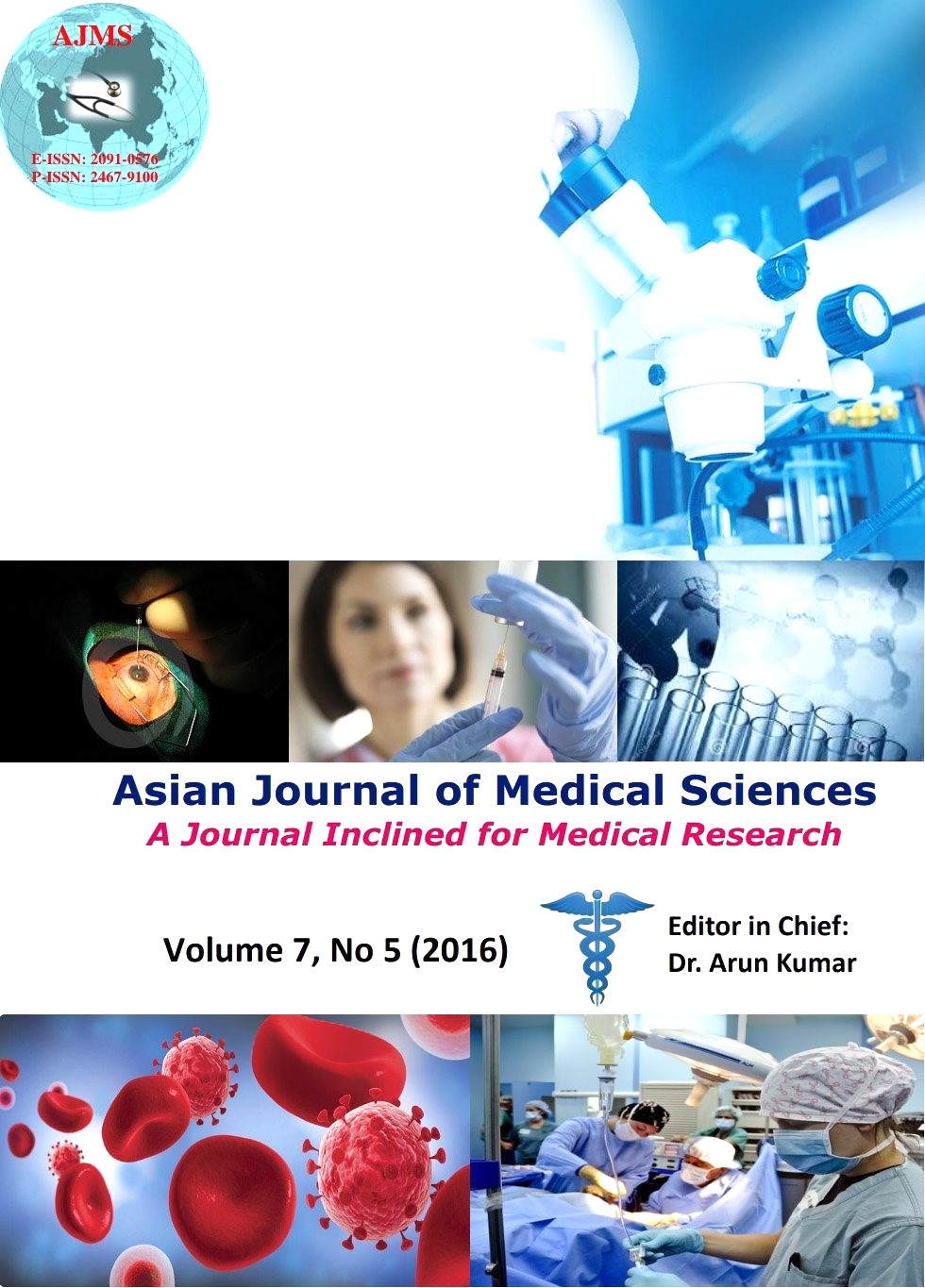Urinary tract infections and antibiotic susceptibility among the patients attending B & D hospital of Lalitpur, Nepal
Keywords:
Urinary tract infection, Antibiotic susceptibility, Kathmandu, NepalAbstract
Background:
Urinary tract infection is the most common bacterial infections in humans and serious health problem in many parts of the world. It has become more complicated in treatment due to different pathogens and increasing resistant to antimicrobial agents. This study aims to investigate the prevalence of urinary tract infection and antibiotic susceptibility patterns of pathogens among the patients attending in B & B hospital Nepal.
Materials and Methods:
A hospital based cross sectional study was conducted in between April 2010 to March 2011. Urine samples were collected from clinically suspected patients and tested bacteriologically using standard procedures. Antimicrobial susceptibility test was performed for isolated pathogen using the Kirby-Bauer disk diffusion method according to Clinical and Laboratory Standards Institute guidelines.
Results:
Out of 1260 examined specimens 25.24 % were positive and majority 61.64% were females. The most common pathogens isolated were Escherichia coli (66.67%), Enterococcus (7.55%) and Staphylococcus (6.60 %). The drug resistant among the positive cases were reported. The highest resistant of positive cases was found with Cefexime (87.88%) and Enterococcus with Ampicillin (66.67%) and Staphyllococcus with Cloxacillin (66.67%). The highest susceptibility was for Vancomycin and Ampicillin i.e. 33.33% in each.
Conclusion:
The findings showed that E. coli isolates were the predominant pathogen and the presence of bacterial isolates with very high resistance to the commonly prescribed drugs. As drug resistance among bacterial pathogens is an evolving process and serious issue. Therefore, routine surveillance and monitoring studies should be conducted to provide physicians knowledge on the updated and most effective empirical treatment of UTIs.
Asian Journal of Medical Sciences Vol.7(5) 2016 47-51
Downloads
Downloads
Additional Files
Published
How to Cite
Issue
Section
License
Authors who publish with this journal agree to the following terms:
- The journal holds copyright and publishes the work under a Creative Commons CC-BY-NC license that permits use, distribution and reprduction in any medium, provided the original work is properly cited and is not used for commercial purposes. The journal should be recognised as the original publisher of this work.
- Authors are able to enter into separate, additional contractual arrangements for the non-exclusive distribution of the journal's published version of the work (e.g., post it to an institutional repository or publish it in a book), with an acknowledgement of its initial publication in this journal.
- Authors are permitted and encouraged to post their work online (e.g., in institutional repositories or on their website) prior to and during the submission process, as it can lead to productive exchanges, as well as earlier and greater citation of published work (See The Effect of Open Access).




